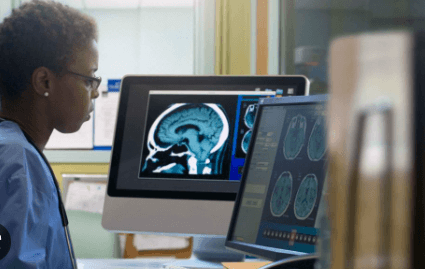Breaking Down the Basics: What is a Radiologist?

Have you ever wondered who’s behind the scenes of your medical imaging results? Look no further than a radiologist! These highly trained specialists play a crucial role in diagnosing and treating various medical conditions. In this blog post, we’ll break down the basics of what is a radiologist, their education and training requirements, as well as their important functions within the healthcare field. Get ready to gain some fascinating insights into this essential profession!
What is a Radiologist?
A Radiologist is a healthcare professional that specializes in the diagnosis and treatment of diseases by using radiation therapy. They use a range of imaging techniques, such as X-rays, to examine patients and diagnose their conditions. Radiologists are also responsible for providing care for cancer patients who may be receiving radiation therapy.
What is a Diagnostic Radiologist?
A diagnostic radiologist is a doctor who uses radiation to diagnose medical conditions. Radiation therapy is often used to treat cancer, and diagnostic radiologists use radiation to look for cancer in people’s bodies.
What are the Different Types of Imaging Procedures?
There are many types of imaging procedures, but the most common are X-ray and MRI. Radiologists use these screenings to look inside tissues and organs.
What are the Different Types of Radiologic Scans?
Radiologists are healthcare professionals who specialize in the use of imaging technology to diagnose and monitor diseases. They may work in a variety of settings, including hospitals, clinics, and diagnostic radiology centers. Radiologists use a wide range of imaging technologies, including X-rays, MRI scans, CT scans, and PET scans.
Different types of radiologic scans can be used to diagnose a number of different medical conditions. X-ray scans are the most common type used by radiologists, and they’re often used to identify broken bones or abnormalities inside the body. MRI scans are often used to evaluate brain injuries or other serious medical conditions. CT scans are also frequently used to check for injuries or tumors inside the body, as well as identify problems with organs outside the body such as the heart or lungs.
PET scans are sometimes used to evaluate cancerous cells in the body. And finally, CT scans can also be used to produce three-dimensional images of structures inside the body.
What are the Benefits of Being a Radiologist?
Radiology is a field of medicine that uses imaging technologies, such as x-rays and MRI scans, to diagnose and treat diseases. Radiologists are responsible for interpreting these images and providing patients with the most accurate information possible.
There are many benefits to being a radiologist. First and foremost, being a radiologist can provide you with excellent medical insight into your patients’ health. This knowledge allows you to make better diagnoses and provide treatment recommendations that will help your patients achieve their optimal health.
Additionally, being a radiologist can bring great financial stability. The Bureau of Labor Statistics reports that the median annual salary for radiation oncology specialists was $139,580 in May 2017. This means that a career as a radiologist is definitely lucrative!
Finally, being a radiologist can offer you an incredibly rewarding experience. As one of the few medical specialties that offers both clinical and research opportunities, being a radiologist provides you with the opportunity to work with some of the best professionals in the world.




